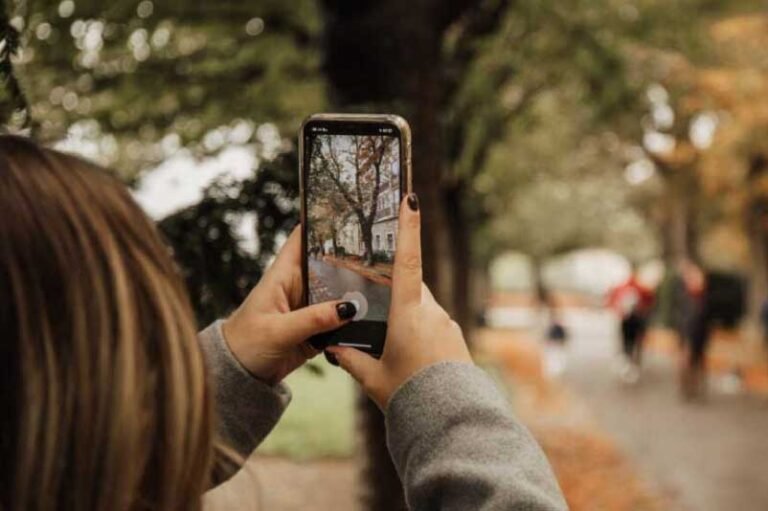
How to take professional photos with a cell phone: 5 Tips

These 5 tips are very useful
Internet presence has become crucial for SMEs and entrepreneurs seeking to stand out in a competitive market. While social networks such as Facebook and Instagram are very powerful digital marketing tools, where photos of products and services are uploaded in order to make them known.
As an entrepreneur, the initial option is to take pictures of your products with a cell phone. This article provides 5 practical tips on how to take professional photos with your cell phone, even if you are not an expert photographer.
1. Use a tripod for stability.
If, when taking the picture, you feel that your pulse is not steady, it’s time to think about getting a tripod. It is necessary for the cell phone to be stable when focusing. This is because the photos we take with bad focus are usually a bit blurry.
Stability is essential for sharp, well-focused photos. A pocket tripod is a convenient tool that provides steadiness and opens the door to advanced photographic techniques. In addition, a tripod helps you with:
- Long exposures: A tripod allows you to capture long exposures without blur. This is essential for night photography or low light situations, where stability is crucial for accurate detail and color.
- Experimenting with composition: By attaching your phone to a tripod, you have the freedom to experiment with image composition. You can try unique angles and unusual framing without worrying about maintaining stability in the process.
- Long exposure techniques: Photographs using long exposure techniques, such as the silk effect in water or capturing light trails, require stability. A tripod allows you to perform these techniques effectively, achieving impressive results.
- Increased comfort on long shoots: If you are taking several consecutive photos or doing an extensive photo shoot, a tripod relieves fatigue in your hands and allows you to maintain the quality of the images over time.
- Versatility in outdoor environments: Whether in a studio or outdoors, a tripod offers constant stability. This is especially valuable in challenging weather conditions, where maintaining balance can be tricky.
By investing in a tripod, you are elevating your photographic game and significantly improving the quality of your images, allowing you to explore new creative possibilities with confidence and precision.
2. Clean the smartphone camera lens.
Although obvious, we clean the camera lens at first, but after a while we forget to do it or get lazy. As told by professional photographers, they, before a photo session, check that their photo equipment is in order and clean.
When it comes to cleaning the smarhphone camera lens, keep this in mind:
- Use a microfiber cloth: Opt for a soft, lint-free microfiber cloth to avoid scratching the lens. This type of material is ideal for removing stains and dirt without damaging the surface.
- Avoid abrasive materials: Never use rough materials such as toilet paper, tissues or fabrics that can scratch the lens. These items can leave residue and damage the lens coating over time.
- Use an air blower: An air blower can be useful for removing dust particles that are not removed with a cloth. Avoid using compressed air, as it may contain moisture that could damage the lens.
- Use mild liquid solutions: If necessary, you can apply a small amount of specific liquid lens cleaning solution or simply distilled water to the microfiber cloth. Make sure the solution does not contain harmful chemicals.
- Rotate the cloth in a circular motion: When cleaning the lens, use gentle circular motions instead of rubbing in a straight line. This helps to evenly distribute the cleaning solution and remove any residue effectively.
- Avoid touching the lens with bare hands: Fingerprints and oil from the skin may affect the image quality. Avoid touching the lens directly with bare hands and always use the microfiber cloth.
- Clean in a controlled environment: Always clean the lens in a dust-free environment and under controlled conditions. Avoid doing so in windy or dusty places that may introduce particles into the lens immediately after cleaning.
By following these tips, you’ll keep your smartphone’s lens in top condition, ensuring that every photo you capture is of the highest possible quality.

3. Use natural light
If you are going to take pictures of products or people, you have to know that the flash of the LED light of a smartphone is not very pleasant and does not favor anyone, no matter the pose. We are aware that the LED light of the smartphone is necessary, as it is part of the camera system and of course, it is necessary for the photo to be well illuminated.
It’s just that when you use that glaring light from the camera, sometimes, depending on the type of cell phone, it can give your images a harsh, oddly colored look compared to natural light.
In conclusion, to take a good photo, try not to depend on the LED light to adequately illuminate the subject or object, look for other light sources that you can make use of, whether it is the waning sun, some indoor lights in your house, or any other place where you are going to take the photo.
4. Do not use the digital zoom
That mode that your smartphone camera has, to better see objects at a distance, is very useful for that only and that is “better see objects at a distance“. Digital zoom on mid-range smartphones can negatively affect image quality. As much as you might like to get a closer look at the object you are going to take a picture of to show it better in the catalog, according to expert photographers, it is not a recommended practice, since the pictures taken with the digital zoom mode, are simply cropped and resized images.
We must differentiate between the optical zoom function that you can find in a professional camera, to the digital zoom of your cell phone. The digital zoom will not only produce a grainy or more pixelated image, but it will decrease the overall resolution of the photo and exacerbate any vibration of your hands, in short, the photo will lose a lot of quality, leaving you with a poorly taken photo of that product you are looking to showcase on social media or on your website.

5. Use alternative applications for the smartphone camera.
The camera that comes inside your cell phone is a hardware and therefore, it is accompanied by a software also known as an application, and both complement each other to take the picture. However, some people don’t know that Android and iOS systems offer alternate camera apps.
You must take into account that it depends on the device you have, since there are mid-range cell phones where the default application for the camera is very complete, and it is not necessary to download other applications.
Here is a list of mobile applications that are excellent complements to the camera, providing additional options and improving the overall photography experience:
- Adobe Lightroom:
- Ideal for RAW photography, Lightroom offers precise exposure, contrast and color adjustments.
- Synchronize your photos with the desktop version for more advanced editing.
- Camera Zoom FX:
- Noted for its advanced features such as burst shooting modes, self-timer and manual settings.
- It offers built-in editing options to enhance and customize your photos directly in the application.
- Halide:
- Specializing in manual photography, Halide allows full control over exposure, focus and other settings.
- It offers a simple, yet powerful interface for users seeking greater control over their shots.
- Camera 360:
- With an intuitive interface, this application offers creative shooting modes, such as capturing moving images and creating panoramas.
- It provides a wide range of filters and editing tools to enhance the aesthetics of your photos.
- Open Camera:
- An open source camera application with a variety of functions, from manual controls to ISO and white balance settings.
- It allows the recording of slow motion and time-lapse videos.
With these applications you can have various functionalities and features that will help you improve your photos.
CONCLUSION
How to take professional photos with a cell phone is not an easy task, but we hope these 5 tips will be useful for you. You must keep in mind that photography is a profession, but for those of us who have SMEs or businesses, learning how to take pictures of our products to make them known is a necessity.




